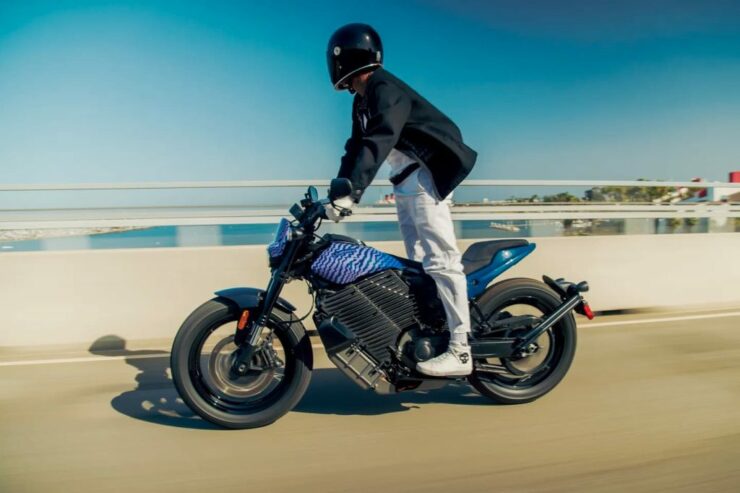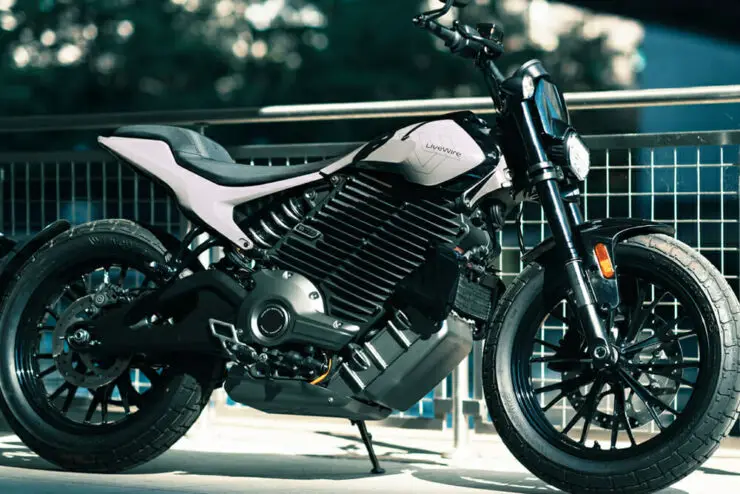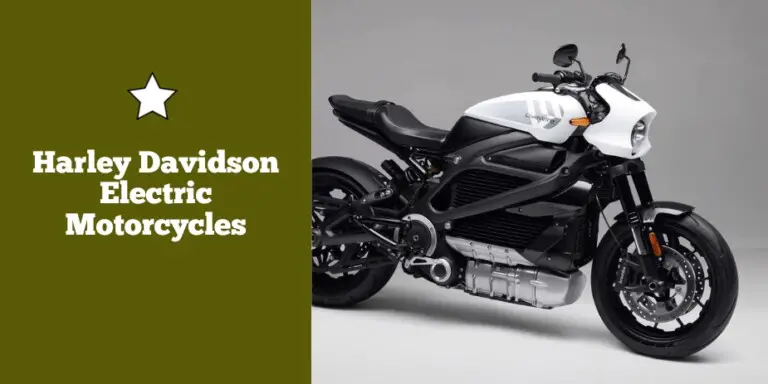Harley-Davidson, the iconic brand synonymous with powerful, rumbling engines and the open road, is now venturing into a new era of transportation with their electric motorcycles. In this article, we will delve into Harley-Davidson’s exciting foray into the electric motorcycle market and explore two of their groundbreaking models: the Livewire One and the S2 Del Mar. Get ready to be thrilled by the fusion of Harley-Davidson’s heritage with cutting-edge electric technology. Whether you’re a die-hard enthusiast or simply curious about the future of motorcycles, this hub page will guide you through the specifics of each electric model, leaving you eager to learn more about the electrifying journey that Harley-Davidson has embarked upon. Buckle up and let’s ride into the electrifying world of Harley-Davidson electric motorcycles!
Harley-Davidson joins the electric revolution
Harley-Davidson bikes are famous for their iconic deep rumble. However, the Milwaukee-based motorcycle manufacturer’s latest foray features an electric motor that emits a high-pitched whirring sound. Despite taking a different road, many fans have come along on the ride.
The company states that electric bikes are the present and the future. Many startups have already started marketing electric motorcycles and Harley-Davidson didn’t want to be left in the dust. The company wants to attract new customers and it has been eyeing growth in urban centers like Asia, where electric scooters are quite popular.
History and evolution of Harley-Davidson in the electric bike market
Harley’s first steps into the electric motorcycle segment came in 2014 as the company decided to join the electric revolution. It marked a major step forward in how traditional riders and Harley enthusiasts viewed electric bikes and their capabilities as an every day of commuting. Meanwhile, it also had doubts that it would suffer from the same stigma associated with electric cars of either being too overpriced or having too limited of a range.
Harley-Davidson’s journey in the electric motorcycle segment came with the Harley-Davidson LiveWire. The Harley-Davidson LiveWire was publicly displayed for the first time in June 2014. The prototypes were made available for public test rides in United States Harley-Davidson dealerships later that year before becoming available for Europe and Canada in 2015. The LiveWire was inspired by the Mission R electric superbike while the powertrains for those prototypes were developed in collaboration with the manufacturer, the electric motorcycle and electric powertrain technology company, Mission Motors.
In January 2018, Harley-Davidson announced that the motorcycle was entering production and would hit the market in eighteen months. Preorders were planned for January 2019. The first deliveries were made in September 2019 but they were halted temporarily because of unspecified charging issues, which the company resolved by October 2019.
Popular Swiss rider Michel von Tell rode a LiveWire to an unofficial electric motorcycle distance-ridden-in-24-hours record in March 2020 as he covered 1,723 km. Von Tell was accompanied by local journalists as he started in Zurich, Switzerland and rode to Stuttgart, Germany. He continued along Lake Constance and finished up in Ruggell, Liechtenstein, in a total time of 23 hours and 48 minutes.
In December 2021, Harley-Davidson announced that it would spin off its LiveWire division as a separate company and it would be called LiveWire and it would go public in the first half of 2022 as a special-purpose acquisition company (SPAC) valued at $1.77 billion.

Harley-Davidson says the company set to be “all-electric” in the future
Harley-Davidson became one of the first major motorcycle manufacturers to add electric motorcycles to its lineup. It should come as no surprise that earlier this year, the company’s CEO Jochen Zeitz feels the brand’s future would be 100% electric. He stated in an interview that it wouldn’t happen overnight but it would likely take decades for the company to go fully electric.
“At some point in time, Harley-Davidson will be all electric. But this is a long-term transition that needs to happen. It’s not something you do overnight”.
With a design heritage spanning more than a century, Harley-Davidson is best known for its loud, large displacement internal combustion engine (ICE) powered motorcycles. Zeitz adds that the company’s past has been defined by constant evolution.
“If you look at the past 120 years, the company has always evolved, never stood still,” he explained. “Now, like the founders did at the time by trying to reinvent or invent something unique, that’s obviously something that we as a company brand need to do as well. What we’re doing is celebrating our past but also evolving the brand at the same time. It’s a natural evolution that needed to happen.”
Zeitz, the CEO of Harley-Davidson is someone who isn’t afraid of making changes, even for a brand with as rich of a legacy as Harley-Davidson. He states that he believes in major transformational changes for iconic brands, which is what he has done in his life.
The best Harley-Davidson Electric Motorcycles in the market
The first Harley-Davidson Electric motorcycle to be released was the LiveWire. It was rolled out to customers in 2019 after the motorcycle’s 2018 EICMA debut. The company then decided to spin out its electric motorcycle operations under a new sub-brand, also referred to as LiveWire. The first model under the LiveWire sub-brand was the LiveWire One. It was inherited from Harley’s first electric motorcycle and rebadged under the new sub-brand. After that, the company also released another spectacular bike in the form of Harley-Davidson S2 Del Mar. The bike has advanced features and presents the best that electric bikes have to offer.
2023 Harley-Davidson LiveWire One
As a marketing exercise, the Harley-Davidson LiveWire ended up being a huge success. At its heart sits a whopping 15.5kWh battery that is paired up with a compact electric motor. In terms of range, LiveWire claims that the LiveWire One is capable of covering at least 146 miles in the city and 95 miles on a mixed test route, which is quite competitive for the class but not groundbreaking.
The 2023 Harley-Davidson LiveWire One comes with a charging capacity as standard. The maximum DC charging rate will be an impressive 13kW, which would take the battery from zero to 80% within 40 minutes and from zero to 100% within 60 minutes. This is enough time to grab a bacon bap and a cup of tea, provided you’re able to find a fast charger at your local biker stop. There is a cable and three-pin plug that lives under the seat and it should be plugged into your 240-volt household supply and it’ll deliver 13 miles for every hour of charging.
Build quality and attention to detail are top-notch. In LiveWire One, everything from the charging port on top of the “tank” to the chunky switchgear built to last, and the paint finish on the Orange Fuse is exceptional. There are the standard-fit LED lights, keyless ignition, TFT dashboard, Showa forks, and Brembo brakes, the sort of kit that makes the price much more palatable.
From the moment you put your thumb to the starter button, you will be able to tell that a lot of time and effort went into making the LiveWire One a truly polished product. Not only will the vertical light bars on each side of the TFT screen turn green allow you to know that the LiveWire One is live, but you’ll also feel a heartbeat-like pulse through the handlebars and base of the seat. This will remove the need to twist the throttle for checking if it is on.
The fact that there is no clutch or any gears to worry about has made the LiveWire One no scarier to ride than a large scooter, and so does the impressively natural throttle connection. There will be four different riding modes (Eco, Street, Rain, and Sport), and each control a host of riding parameters. Eco mode feels suited for inner-city work and still good enough to deliver enough punch to smoke Uber drives away from the lights. Meanwhile, Sport, with its increased engine braking and instant throttle feels ideal on fast and flowing country roads.
With no gears, no clutch, and no noise, you may think that the bike cannot deliver the raw thrills of a petrol-powered bike. However, all it’ll take is a full-bore start and your worries will go away. It can go from zero to 60 in just 3 seconds and with no noise accompanying the relentless turn of speed, you’ll feel like you are flying.

2023 Harley-Davidson S2 Del Mar
Harley-Davidson introduced its second electric motorcycle in the form of the 2023 Harley-Davidson S2 Del Mar. I rode it once and I did not want to go back to my old life before I rode this bike. That is not to say that the bike is perfect but it checks almost all the boxes. The only major downside here is that it is a bit pricey, at least for a motorcycle that is a bit pricier, at least for a bike that will largely be used in a commuter role by most riders.
It is more affordable than the LiveWire One ($22,799), which serves as the brand’s flagship electric motorcycle. If you are able to afford this bike, you will be glad that you did. The updated city range of the bike has been listed at 110 miles (177 km) for a single charge. Both Level 1 (normal wall outlet charging) and Level 2 (public charging station) are available on the bike although there is no Level 3 DC fast charging that can typically be found on the LiveWire One.
The company states that a Level 2 recharge of 20 to 80% would take around 75 minutes. This is longer than a coffee shop but it’ll mean that a lunch stop or shopping trip can conceivably put an almost full charge back into the tank.
At 431 pounds (195 kg), the 2023 Harley-Davidson S2 Del Mar is lighter than the 560-pound (254 kg) Harley-Davidson LiveWire One. With the same acceleration times, it stands to reason that it’ll have a lower power rating than the LiveWire One’s 78kW motor.
When I rode it, the S2 Del Mar felt like a Goldilocks bike. It had a shorter reach than the LiveWire One, which will make you feel like you are sitting more upright and don’t get the feeling that you are leaning out forward over the tank in order to grab the bars. It isn’t too small either and it’ll give you ample height over the pegs that your legs don’t tuck underneath you. It is no cruiser bike but it is closer to the end of the comfort spectrum.
Coming to the structural battery and motor combo that the S2 Del Mar is built on, it’ll look quite compact. However, the bike has some serious presence when you’re walking up and throwing a leg over it. No one will think that you are on a small bike. When you’re blowing past other people on the road, leaving them in the dust, they will be sure that you weren’t on a small bike.
When it comes to battery capacity, based on the 110-mile city range offered by the company and the Level 2 recharge time from 20% to 80% in 75 minutes. The battery of the S2 Del Mar will fall in the range of 9.5 to 10.5kWh. Between city riding and highway riding, the Harley-Davidson S2 Del Mar will feel equally at home in both worlds. It is small and light enough for a nimble city ride but big and powerful enough to be comfortable on any interstate.
However, the one thing that you may find to be a bit lacking will be the lack of any sort of sound. When you’re testing the bike in and around the city, the city’s cacophony will never allow the nuisance of a modest direct-drive electric motor to whine through.

